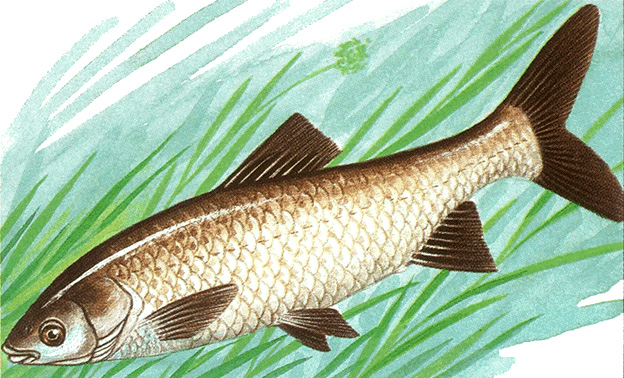Carp is the name of several large, hardy fish native to rivers and other inland waters of Europe and Asia. The common carp, also called German Carp, was introduced into the United States from Germany in the late 1870’s. Since then, it has become the dominant fish in many bodies of water in the United States. The word carp also refers to a family of about 2,000 species of fish. In addition to the species known as carp, this family includes barbs, danios, goldfish, and minnows.

Carp range in color from olive to yellow-green on the back, with sides that are lighter than the back. The fins are gray-green, brown, or sometimes reddish. Most common carp measure from about 12 to 30 inches (30 to 76 centimeters) in length and weigh from 2 to 10 pounds (0.9 to 4.5 kilograms). Some grow to 40 inches (102 centimeters) and weigh up to 60 pounds (27 kilograms). Other species are generally smaller.
Carp live in all types of freshwater environments. They prefer lakes or slow-moving streams and rivers with much vegetation and can thrive in polluted water. They tend to avoid clear, fast-flowing streams and rivers.
Carp are omnivores–that is, they eat both animals and plants. They feed mainly by sucking and rooting insects and plants off the bottom of the water. A female carp can produce 35,000 to 2,000,000 eggs each year. Carp grow rapidly, reaching 8 inches (20 centimeters) in the first year. They live 15 to 18 years. Carp are popular food fish in Europe and Asia.
In the United States, many fishery managers and fishing enthusiasts consider common carp a nuisance. When carp root food from the water bottom, they stir silt and debris and muddy the water. This hinders the ability of other species of fish to feed and reproduce. Common carp also eat the eggs of other fish and compete with the fish for food and space. Because of these problems, fish-removal programs have been conducted in many bodies of water to reduce the numbers of common carp. Such programs include selective netting, commercial fishing, and even killing with poisons.
In 1963, the grass carp was brought to the United States from Asia to help control the overgrowth of certain water plants. But the species has grown so successfully that scientists are concerned about its effect on other freshwater fish.
See also Asian carp.
